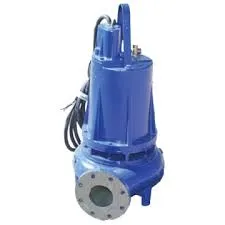Punjabi
- Afrikaans
- Albanian
- Amharic
- Arabic
- Armenian
- Azerbaijani
- Basque
- Belarusian
- Bengali
- Bosnian
- Bulgarian
- Catalan
- Cebuano
- Corsican
- Croatian
- Czech
- Danish
- Dutch
- English
- Esperanto
- Estonian
- Finnish
- French
- Frisian
- Galician
- Georgian
- German
- Greek
- Gujarati
- Haitian Creole
- hausa
- hawaiian
- Hebrew
- Hindi
- Miao
- Hungarian
- Icelandic
- igbo
- Indonesian
- irish
- Italian
- Japanese
- Javanese
- Kannada
- kazakh
- Khmer
- Rwandese
- Korean
- Kurdish
- Kyrgyz
- Lao
- Latin
- Latvian
- Lithuanian
- Luxembourgish
- Macedonian
- Malgashi
- Malay
- Malayalam
- Maltese
- Maori
- Marathi
- Mongolian
- Myanmar
- Nepali
- Norwegian
- Norwegian
- Occitan
- Pashto
- Persian
- Polish
- Portuguese
- Punjabi
- Romanian
- Russian
- Samoan
- Scottish Gaelic
- Serbian
- Sesotho
- Shona
- Sindhi
- Sinhala
- Slovak
- Slovenian
- Somali
- Spanish
- Sundanese
- Swahili
- Swedish
- Tagalog
- Tajik
- Tamil
- Tatar
- Telugu
- Thai
- Turkish
- Turkmen
- Ukrainian
- Urdu
- Uighur
- Uzbek
- Vietnamese
- Welsh
- Bantu
- Yiddish
- Yoruba
- Zulu
Telephone: +86 13120555503
Email: frank@cypump.com
ਨਵੰ. . 16, 2024 00:02 Back to list
pumps for slurry application
Pumps for Slurry Applications An Overview
In various industrial processes, handling and transporting slurries—mixtures of solids and liquids—presents unique challenges. To address these challenges, specialized pumps designed for slurry applications are essential. This article delves into the types of pumps suitable for slurry transport, their operational principles, key features, and the industries that rely on them.
Understanding Slurry
Slurry consists of finely divided solids suspended in a liquid, commonly water. The composition of the slurry can vary significantly, including materials such as sand, coal, minerals, and other particulates, making it critical to choose the right pump to handle the specific characteristics of the slurry. Factors such as viscosity, solid density, and particle size influence pump selection, impacting efficiency and system reliability.
Types of Pumps for Slurry Applications
1. Centrifugal Pumps Although commonly used for liquids, centrifugal pumps can handle low to medium slurry concentrations efficiently. They have a rotating impeller that generates centrifugal force to move the slurry. However, their effectiveness diminishes with highly viscous slurries or those containing large particles, which can lead to pump clogging or wear.
2. Positive Displacement Pumps These pumps are often preferred for pumping high-viscosity slurries or those with substantial solid content. They operate by trapping a fixed volume of slurry and forcing it through the discharge pipe. Types of positive displacement pumps include gear pumps, diaphragm pumps, and screw pumps, each offering distinct advantages depending on the application.
3. Slurry Pumps Specifically designed for slurry transport, these pumps incorporate robust construction features, such as wear-resistant materials and heavy-duty designs, to withstand the harsh conditions associated with abrasive slurries. Slurry pumps can be centrifugal or positive displacement types and are available in various configurations to cater to specific slurry characteristics.
Key Features of Slurry Pumps
When selecting a pump for slurry applications, several key features must be considered
- Material Construction Slurry pumps should be constructed from resilient materials such as rubber, stainless steel, or high-chrome alloys to resist abrasion and corrosion from the solid particles and chemicals present in the slurry.
pumps for slurry application

- Force and Efficiency Pumps must provide sufficient flow rate and pressure to ensure the efficient transport of slurry through pipelines, particularly over long distances or against elevation changes.
- Maintenance and Serviceability Given the challenging nature of slurries, ease of maintenance is crucial
. Many slurry pumps offer modular designs for easy access to components, minimizing downtime during repairs.Industries Utilizing Slurry Pumps
Slurry pumps are indispensable across various industries
- Mining and Mineral Processing They are used to transport ore slurries for extraction and processing.
- Pulp and Paper Industry Slurry pumps transport wood pulp and chemical slurries through the papermaking process.
- Wastewater Management In sewage treatment plants, slurry pumps move sludge and wastewater efficiently.
- Construction Industry They facilitate the transportation of cement slurries and other mixtures in construction applications.
Conclusion
In conclusion, selecting the appropriate pump for slurry application is paramount for ensuring efficiency, reliability, and longevity in various industrial processes. By understanding the different types of slurry pumps, their operational characteristics, and the industries they serve, operators can make informed decisions that enhance productivity and reduce operational costs. As technology progresses, the design and capabilities of slurry pumps will continue to evolve, addressing the increasingly complex needs of industries worldwide.
-
Custom Drilling Mud and Slurry Pump Supplier - High Efficiency, Tailored Solutions
NewsJun.10,2025
-
Supply Vertical Submersible Sewage Pump High-Efficiency WQ/QW Pumps Supplier
NewsJun.10,2025
-
Premium Sewage Ejection System & Pumps Efficient Waste Removal
NewsJun.09,2025
-
Premium Wholesale Slurry Pump Impellers Durable & Efficient Slurry Handling
NewsJun.09,2025
-
Top Sewage Pump Companies Durable Industrial Solutions for Efficiency
NewsJun.09,2025
-
Heavy Duty Slurry Pumps - OEM High Performance & Bulk Wholesale
NewsJun.09,2025










